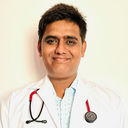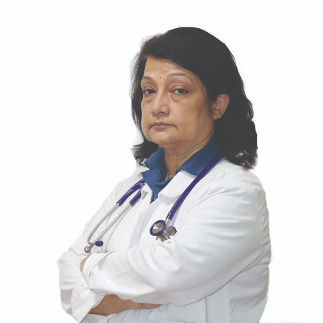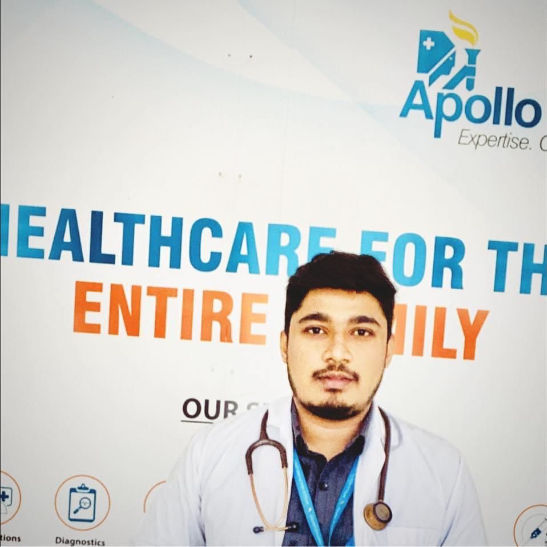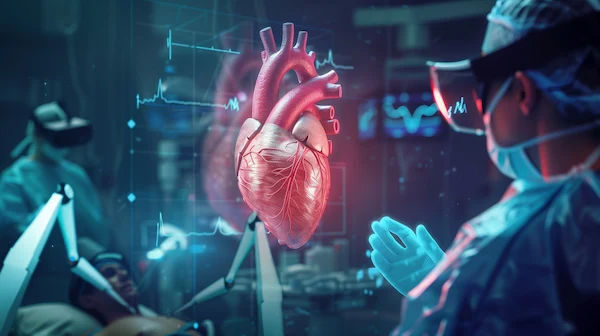Your Road to Recovery; A Comprehensive Guide to Rehabilitation After Cardiac Surgery
Discover the complete guide to rehabilitation after cardiac surgery, including phases of recovery, exercise, diet, emotional support, and returning to daily life.

Written by Dr. J T Hema Pratima
Reviewed by Dr. Rohinipriyanka Pondugula MBBS
Last updated on 6th Oct, 2025

Introduction
Undergoing cardiac surgery—whether it's a bypass, valve repair, or another procedure—is a monumental step towards better health. But what happens after the surgery is just as critical as the procedure itself. This is where rehabilitation after cardiac surgery comes in. Think of it not as an optional extra, but as an essential part of your treatment plan, designed to guide you safely from the hospital bed back to an active, fulfilling life. Cardiac rehabilitation is a supervised programme that empowers you to regain your strength, improve your heart health, and significantly reduce the risk of future heart problems. It’s a journey that addresses your body, mind, and lifestyle. This guide will walk you through every aspect of this journey, from the first steps in the hospital to maintaining a heart-healthy lifestyle for years to come. We’ll cover the structured phases, the exercises you’ll encounter, the dietary changes that matter, and the emotional support you need to heal completely.
What is Cardiac Rehabilitation? More Than Just Exercise
Many people mistakenly believe that cardiac rehabilitation is just a fancy term for post-surgery exercise. While physical activity is a cornerstone, it's so much more. It's a multidisciplinary, personalised programme designed to optimise your physical, psychological, and social well-being. According to the American Heart Association, cardiac rehab is a class I recommendation for most patients recovering from heart surgery, meaning it's considered essential and effective.
The Four Core Components of a Successful Cardiac Rehab Programme
A comprehensive programme is built on four key pillars:
- Medical Evaluation and Supervised Exercise: This isn't about lifting weights alone at the gym. Your initial fitness level will be assessed to create a safe, tailored exercise plan. You'll exercise under the supervision of healthcare professionals who monitor your heart rate, blood pressure, and symptoms.
- Lifestyle Education and Counselling: You’ll learn about heart-healthy nutrition, weight management, and how to manage risk factors like cholesterol, blood pressure, and diabetes. This education is crucial for long-term success.
- Risk Factor Management: The programme provides support for quitting smoking, managing stress, and adhering to medications. This proactive approach tackles the root causes of heart disease.
- Psychological Support: The emotional impact of heart surgery is profound. Rehab programmes offer counselling and support groups to address feelings of anxiety, depression, or fear, which are common during recovery from cardiac surgery.
The Crucial Benefits: Why Cardiac Rehab is Non-Negotiable
The evidence supporting cardiac rehabilitation is overwhelming. Patients who actively participate in a programme can experience a remarkable range of benefits:
- Reduced Mortality: Studies show that cardiac rehab can reduce death from heart disease by up to 30%. It is one of the most powerful interventions for improving survival.
- Improved Functional Capacity: You’ll regain strength and stamina, making everyday activities like climbing stairs or grocery shopping much easier.
- Fewer Hospital Readmissions: The programme teaches you to manage your condition effectively, leading to fewer complications and return trips to the hospital.
- Enhanced Quality of Life: By reducing symptoms like chest pain and shortness of breath, and improving mental health, patients report a significantly better quality of life.
- Better Medication Adherence: With ongoing support and education, you are more likely to understand and take your medications correctly.
Despite these proven benefits of cardiac rehab after bypass surgery and other procedures, participation rates are often low. Committing to the entire programme is a gift you give yourself for a healthier future.
Consult Top Specialists for Personalised Tips
The Phases of Cardiac Rehabilitation: A Step-by-Step Journey
Your recovery is a process that unfolds in distinct stages. Understanding this cardiac rehabilitation phases timeline can help you set realistic expectations.
Phase 1: The In-Hospital Phase (Getting Started)
Rehabilitation begins almost immediately after your surgery, while you are still in the hospital. The focus is on preventing complications and starting very gentle mobilisation. A physiotherapist will guide you through activities like:
- Deep breathing exercises to prevent lung infections.
- Slowly sitting up on the edge of the bed.
- Taking short walks around your room or hospital corridor, always observing sternal precautions (protecting your breastbone).
Phase 2: The Supervised Outpatient Phase (The Core Programme)
This is the most recognised phase, typically starting 2–6 weeks after discharge. It involves attending scheduled sessions (e.g., 3 times a week for 12 weeks) at a hospital or clinic. Here, you’ll work closely with a team including nurses, exercise specialists, and dietitians. This phase is crucial for building aerobic capacity safely and learning lifelong habits.
Phase 3: The Maintenance Phase (Lifelong Health)
After completing the supervised programme, you transition to maintaining your progress independently. You’ll have the knowledge and confidence to continue exercising and eating well at home or in a community gym. This phase lasts for the rest of your life, focusing on secondary prevention of heart disease.
Your Cardiac Rehab Exercise Plan: Building Strength Safely
The exercise plan in cardiac rehab is progressive and closely monitored. The goal is to strengthen your heart muscle without overstraining it.
Types of Exercises: Aerobic, Strength, and Flexibility
- Aerobic Exercise: This is the foundation. Activities like walking on a treadmill, cycling on a stationary bike, or using an elliptical machine improve your heart and lung efficiency.
- Strength Training: Light resistance training with bands or very light weights helps rebuild muscle mass lost during recovery, which supports your metabolism and makes daily tasks easier.
- Flexibility: Gentle stretching improves your range of motion and reduces muscle stiffness.
Monitoring Your Intensity: The Talk Test and Target Heart Rate
You'll learn to exercise at a safe intensity. The "Talk Test" is a simple guide: you should be able to hold a conversation while exercising. If you’re too breathless to speak, you're working too hard. Your team may also give you a target heart rate zone to stay within.
Nutrition for a Healthy Heart: Fuelling Your Recovery
A cardiac rehab diet plan is not about deprivation; it’s about embracing delicious, nutrient-rich foods that support healing and cardiovascular health. The focus is on:
- Plenty of Fruits and Vegetables: Packed with vitamins, minerals, and fibre.
- Whole Grains: Like oats, brown rice, and quinoa for sustained energy.
- Lean Proteins: Such as fish (especially oily fish like salmon), skinless poultry, beans, and lentils.
- Healthy Fats: From sources like avocados, nuts, and olive oil.
- Limiting: Sodium, added sugars, saturated and trans fats, and processed foods.
The Emotional Journey: Managing Stress, Anxiety, and Depression
It is entirely normal to experience a rollercoaster of emotions after heart surgery. Fear about your future, frustration with physical limitations, and even symptoms of depression are common. Psychological support is a vital part of rehab. Techniques like mindfulness, meditation, and simply talking to a counsellor or support group can make a world of difference. If feelings of sadness or anxiety are overwhelming your daily life, it's important to seek help. You can consult a psychologist online with Apollo24|7 for convenient and confidential support.
Returning to Daily Life: Work, Driving, and Intimacy
A major goal of rehab is to help you resume your normal activities. Here’s a general guideline:
Driving: Most patients can resume driving after 4–6 weeks, but you must get clearance from your doctor, especially if you are on strong pain medications.
Work: The timeline depends on the physical demands of your job. A desk job may allow a return in 6–8 weeks, while manual labour will require a longer recovery.
Intimacy: This is a common concern. Generally, you can resume sexual activity when you can comfortably climb two flights of stairs. Open communication with your partner and doctor is key.
Conclusion
Rehabilitation after cardiac surgery is your pathway from a major health event to a stronger, healthier future. It equips you with the knowledge, skills, and confidence to take control of your heart health. By actively participating in every aspect of the programme—from the prescribed exercises to the nutritional guidance and psychological support—you are not just recovering; you are building a foundation for a longer, more vibrant life. View this journey as an opportunity for a fresh start. Embrace the support of your healthcare team, lean on your loved ones, and celebrate every small victory along the way. Your heart has been given a second chance; cardiac rehab helps you make the most of it.
Consult Top Cardiologists
Consult Top Specialists for Personalised Tips

Dr. Bhethala Sharan Prakash
General Physician/ Internal Medicine Specialist
5 Years • MBBS MD
Bengaluru
PRESTIGE SHANTHINIKETAN - SOCIETY CLINIC, Bengaluru

Dr. Sushith C
General Physician
2 Years • MBBS
Bengaluru
PRESTIGE SHANTHINIKETAN - SOCIETY CLINIC, Bengaluru

Dr. Anand Ravi
General Physician
2 Years • MBBS
Bengaluru
PRESTIGE SHANTHINIKETAN - SOCIETY CLINIC, Bengaluru

Dr. Tripti Deb
Cardiologist
40 Years • MBBS, MD, DM, FACC, FESC
Hyderabad
Apollo Hospitals Jubilee Hills, Hyderabad

Dr. Zulkarnain
General Physician
2 Years • MBBS, PGDM, FFM
Bengaluru
PRESTIGE SHANTHINIKETAN - SOCIETY CLINIC, Bengaluru
Consult Top Cardiologists

Dr. Bhethala Sharan Prakash
General Physician/ Internal Medicine Specialist
5 Years • MBBS MD
Bengaluru
PRESTIGE SHANTHINIKETAN - SOCIETY CLINIC, Bengaluru

Dr. Sushith C
General Physician
2 Years • MBBS
Bengaluru
PRESTIGE SHANTHINIKETAN - SOCIETY CLINIC, Bengaluru

Dr. Anand Ravi
General Physician
2 Years • MBBS
Bengaluru
PRESTIGE SHANTHINIKETAN - SOCIETY CLINIC, Bengaluru

Dr. Tripti Deb
Cardiologist
40 Years • MBBS, MD, DM, FACC, FESC
Hyderabad
Apollo Hospitals Jubilee Hills, Hyderabad

Dr. Zulkarnain
General Physician
2 Years • MBBS, PGDM, FFM
Bengaluru
PRESTIGE SHANTHINIKETAN - SOCIETY CLINIC, Bengaluru
More articles from Heart disease
Frequently Asked Questions
How long does a typical cardiac rehab programme last?
The supervised outpatient phase (Phase 2) typically lasts for 36 sessions over 12 weeks, meeting three times per week. However, the duration can be adjusted based on your individual needs and progress.
Is cardiac rehab covered by insurance?
In most countries, including India, insurance providers often cover cardiac rehabilitation for qualifying conditions like post-heart surgery. It's best to check with your specific insurance provider and the rehab facility for details on coverage.
What should I wear to my cardiac rehab sessions?
Wear comfortable, breathable clothing suitable for exercise, like a t-shirt and shorts or track pants. Supportive, well-fitting athletic shoes are essential for safety and comfort.
I live far from a rehab centre. Are there any alternatives?
Yes, home-based cardiac rehab programmes are becoming more common. These involve regular check-ins with your healthcare team via phone or video call while you follow a prescribed exercise and education plan at home. Apollo24|7 offers remote consultations that can be part of such a managed care plan.
When can I start doing home exercises after cardiac surgery?
You will start with very gentle walking immediately after surgery. Your medical team will provide a detailed plan before you leave the hospital. Never start a new exercise routine without their approval to ensure your sternum is healing properly.

